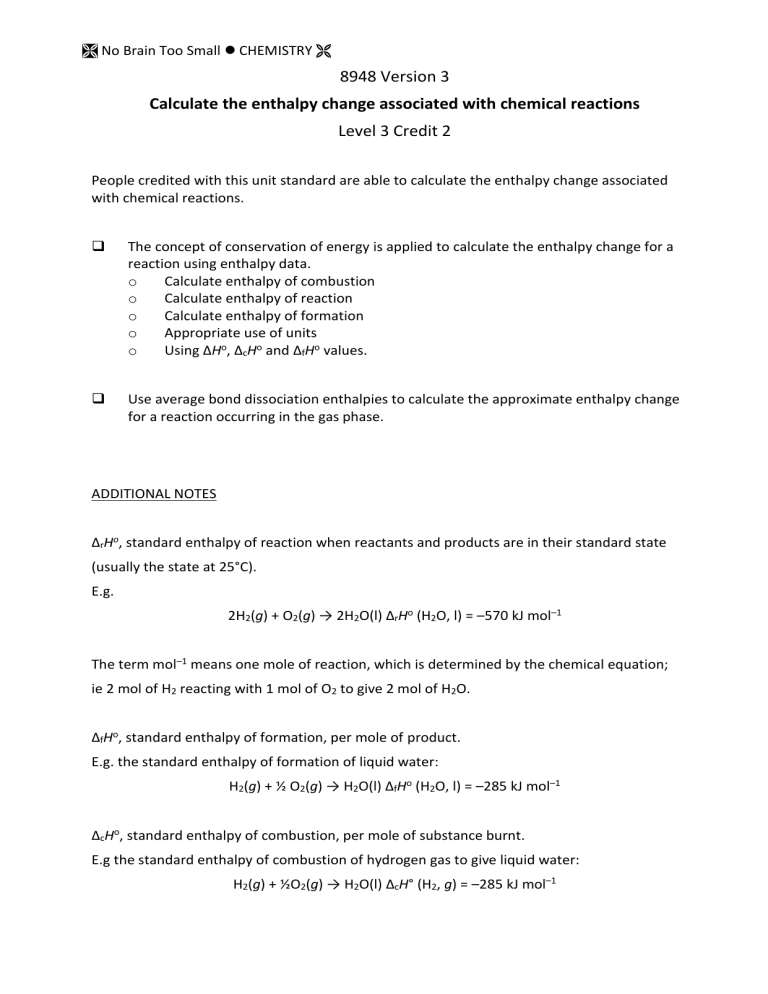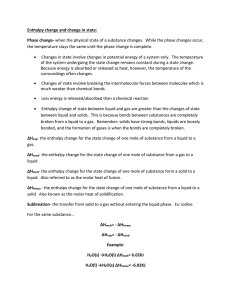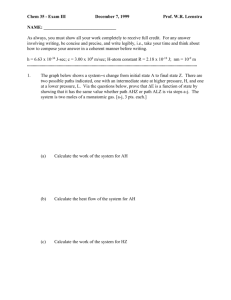enthalpy changes - No Brain Too Small
advertisement

No Brain Too Small CHEMISTRY 8948 Version 3 Calculate the enthalpy change associated with chemical reactions Level 3 Credit 2 People credited with this unit standard are able to calculate the enthalpy change associated with chemical reactions. The concept of conservation of energy is applied to calculate the enthalpy change for a reaction using enthalpy data. o Calculate enthalpy of combustion o Calculate enthalpy of reaction o Calculate enthalpy of formation o Appropriate use of units o Using ΔHo, ΔcHo and ΔfHo values. Use average bond dissociation enthalpies to calculate the approximate enthalpy change for a reaction occurring in the gas phase. ADDITIONAL NOTES ΔrHo, standard enthalpy of reaction when reactants and products are in their standard state (usually the state at 25°C). E.g. 2H2(g) + O2(g) → 2H2O(l) ΔrHo (H2O, l) = –570 kJ mol–1 The term mol–1 means one mole of reaction, which is determined by the chemical equation; ie 2 mol of H2 reacting with 1 mol of O2 to give 2 mol of H2O. ΔfHo, standard enthalpy of formation, per mole of product. E.g. the standard enthalpy of formation of liquid water: H2(g) + ½ O2(g) → H2O(l) ΔfHo (H2O, l) = –285 kJ mol–1 ΔcHo, standard enthalpy of combustion, per mole of substance burnt. E.g the standard enthalpy of combustion of hydrogen gas to give liquid water: H2(g) + ½O2(g) → H2O(l) ΔcH° (H2, g) = –285 kJ mol–1





